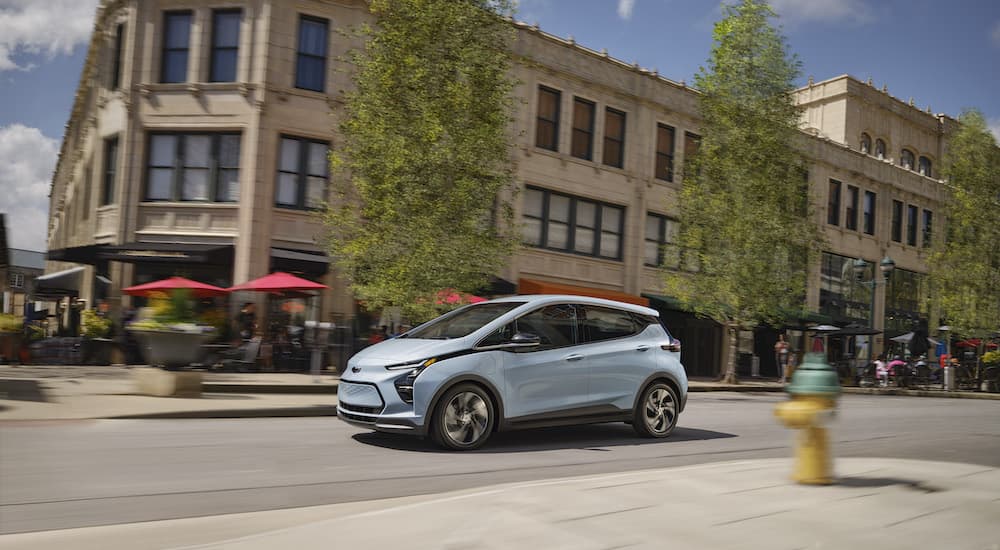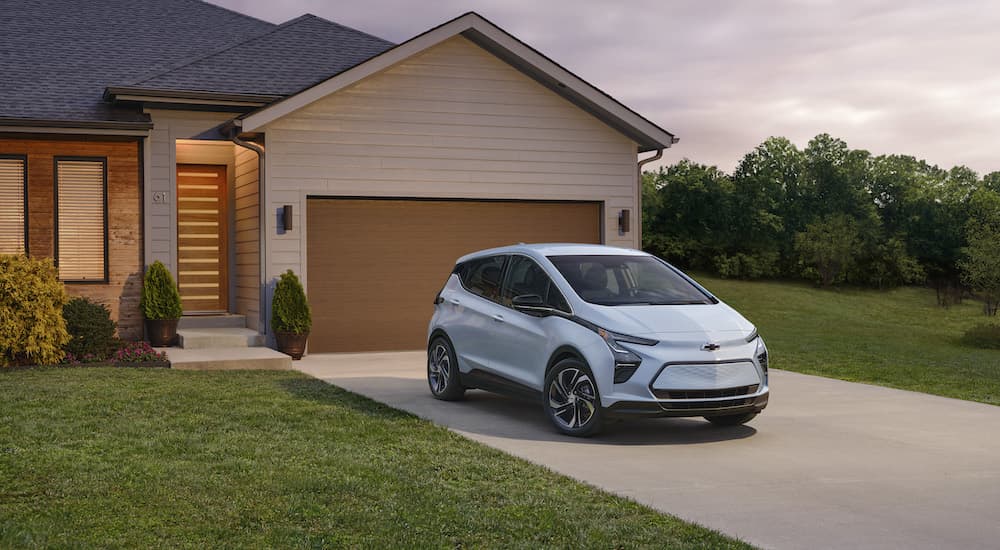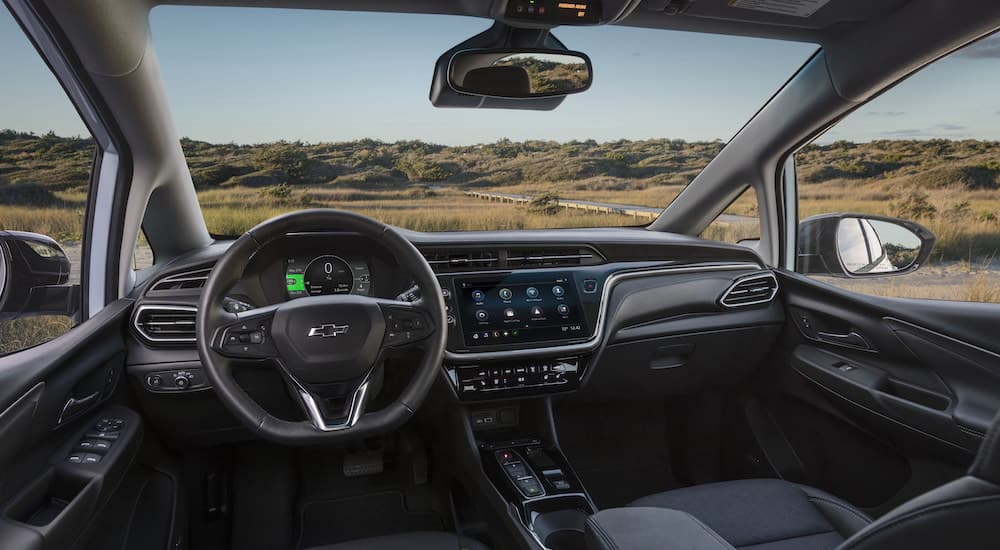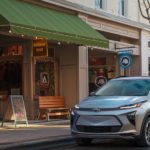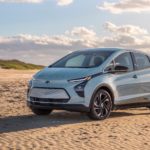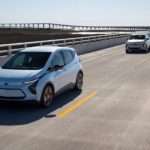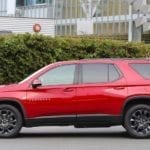There is talk that the ICE age is coming to an end. The Internal Combustion Engine is a prehistoric option compared to the electric motor, which sees itself firmly planted in our future. This is in part thanks to so many automotive manufacturers greenlighting the change to more energy-efficient options. Take, for instance, the new 2023 Chevy Bolt EV.
As one of the most inexpensive electric options out there, the $26,500 Bolt EV is a smart choice for everyday driving. However, what about road trips? After all, isn’t a car’s value measured by how well it holds up to an adventure? No? Well, it should be. Despite its low price tag, the Bolt EV is still loaded with awesome features that will come in handy for cruising down the highway on the ultimate road trip.
For this hypothetical adventure, I wanted to see how a fully electric vehicle could handle a road trip of epic proportions––or at least Jurassic. Along the scenic Uinta Basin is the Dinosaur Diamond Prehistoric Highway that runs through Utah and Colorado. The trip is 486 miles, definitely doable in a day or two, even stopping to see the many sights along the way. But is it possible without the help of fossil fuels?
Charging Ahead
This road trip is a diamond, starting in Dinosaur Colorado and ending in Dinosaur Colorado. With 10 stops total, including the starting/ending point, and just shy of 500 miles, this is a reasonable road trip to try the Chevy Bolt EV out on. Road Trip 101 states that you should start off on the right foot by making sure your vehicle is fueled up and ready to go. In the case of the Bolt EV, that means making sure it has a full charge. The car is rated for 259 miles of range, but this can vary depending on weather, terrain, and what amenities you use while driving.
If you live in Dinosaur and are set up to charge at home, then no need to worry about finding a public charging station. For home charging, there are three levels available to the Bolt EV owner. If you don’t want to worry about specialized installation, you can charge right from a standard 120V household electrical outlet. This method gets you an estimated four miles of range per hour. Not ideal, but definitely doable as long as you plug in every night.
The next option is to charge with a Level 2 charger and the Bolt EV‘s dual-level charge cord. This option provides an estimated 26 miles of range per hour with a standard 240V outlet. The dual-level charge cord gives you the flexibility to charge from 120V and 240V outlets without needing a specialized charging station.
The final home charging option is an 11.5 kW Level 2 charging station. This is the fastest of the at-home options and can get you 39 miles of range per hour. A full charge from empty would only take about seven hours, but this option requires professional installation. Chevy is making it fairly easy to get home installation, even offering to help with getting you set up. With so many charging options, it doesn’t seem that difficult to get on the road.
The Future Meets the Dinosaur
The most difficult part of planning this road trip was figuring out how to find the EV charging stations along the route. There are several websites and apps that claim to make it easy, so find the one you like. I ended up using good old fashion Google Maps, but Chevy does offer something called Energy Assist. Energy Assist is an app for your smartphone that syncs to your Chevy Bolt EV. It tells you how much battery power you have left, where there are charging stations along your route, and even how long to charge for.
Energy Assist is designed to take a lot of the guesswork out of planning a trip, which is nice, especially for novice EV owners. There are over 50,000 charging stations scattered throughout the United States, but I wanted to see if they fit into real-life driving. After entering my trip into Google Maps and selecting the EV charging option, I was able to see where and what kind of charging stations were along the route.
For on-the-go charging, there are two options. Level 2 charging and DC Fast Charging. However, Level 2 is too slow for road trip use since you would have to spend most of the day recharging. DC Fast Charging, however, can provide approximately 100 miles of range in 30 minutes of charging. Many of the stations that popped up along the route offered DC Fast Charging. With charging stations in every major town, there should be no worries about running out of power on the road.
As electric vehicles become more common, more options for charging are also becoming available. Hotels, for example, are starting to offer their guests overnight charging options. So far, this amenity is usually only offered at higher-end hotels and may or may not be an extra fee to the guest. This was not taken into consideration, but if you managed to find a hotel with charging options, it could cut down on the number of charging stops during your drive.
How Does It Stack Up?
Ultimately, my planned trip would require five stops, charging via DC Fast Charging for a half hour each at Grand Junction, Moab, Green River, Price, and Vernal. Strictly speaking, you could probably do it in two stops, but I decided to play it safe and made sure I left myself enough margin to skip any planned charging stop. If your plan is to be on the road, taking your time, that doesn’t seem so bad. However, if you were trying to book it and make it through each city with speed, you could be looking at about 2.5 hours added to your total trip time just spent on charging your Bolt EV.
The biggest worry is that the infrastructure in some of the locations is not that robust. For instance, Moab (our second stop) has a single DC Fast Charging point, and Plug Share warned that it was undergoing maintenance when I was planning this trip. Another hassle is that my planned stops involved using charging stations from ChargePoint, Electrify America, and EvGateway. That means three different apps are needed to pay for charging, which is a lot more of a hassle than you might want to deal with.
Can You Road Trip a Chevy Bolt EV?
Although driving a gas-powered car would make a road trip like this one much quicker and probably more convenient, it’s hard to ignore the other aspects of owning an EV. With the ability to charge at home, an EV is a far more convenient alternative for everyday driving. In fact, if all you did was drive around town, you would never have to stop at a public charging station.
However, if you like to take road trips or mini vacations, it may take a bit more strategizing if you are taking your Bolt EV. Chevy’s smartphone app makes it easier to find charging stations, but it’s still a good idea to be prepared to wait while your Bolt EV gets its boost. With the current infrastructure, going on a road trip in an EV may not be ideal, but it is manageable. With proper planning and preparation, you could see all the major fossil sites without ever using fossil fuels.
